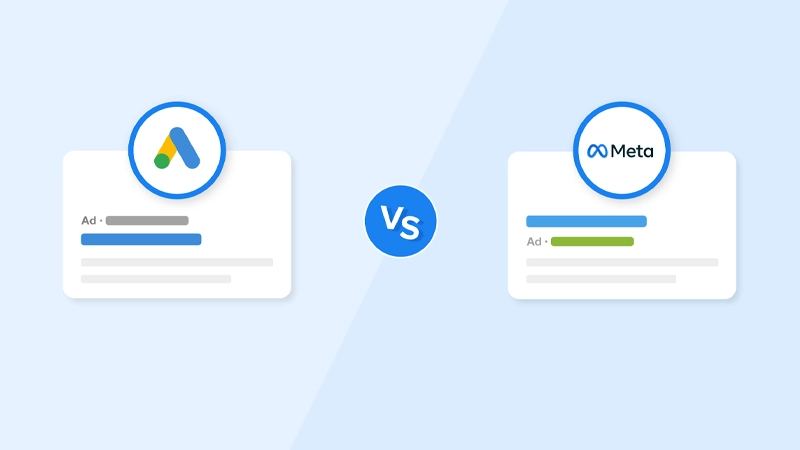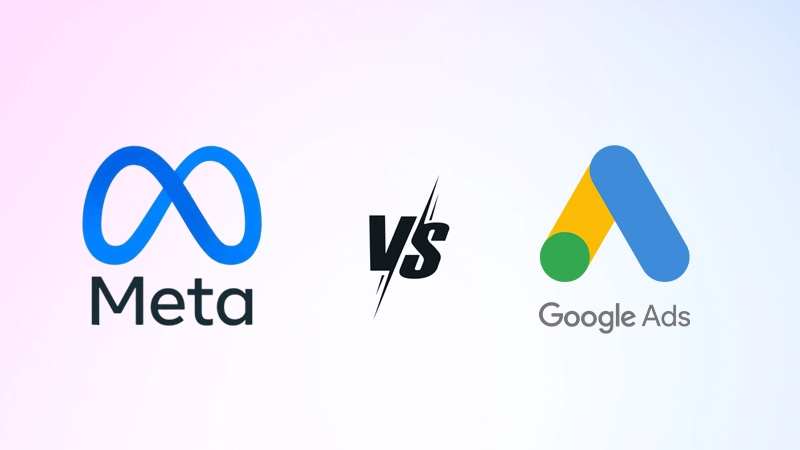
In the digital marketing world, Meta Ads (formerly Facebook Ads) and Google Ads are two of the most powerful platforms for reaching audiences and achieving business goals. While both serve to drive traffic, leads, and sales, they operate in fundamentally different ways. Here's a breakdown of their differences to help you decide which is best for your campaign.
Platform Purpose and Audience Targeting
- Runs across platforms like Facebook, Instagram, Messenger, and Audience Network.
- Focuses on social behavior and interests, allowing businesses to target audiences based on demographics, interests, behaviors, and even past interactions.
- Ideal for creating awareness and engaging users who may not yet be actively searching for your product or service.
- Dominates the search intent market, showing ads on Google Search, YouTube, and its Display Network.
- Targets users based on keywords
- ensuring ads appear when people actively search for specific products or services.
- Best for capturing demand and driving direct conversions.
Meta Ads:
Google Ads:
Advertising Formats
- Includes formats like image ads, video ads, carousel ads, collection ads, and stories.
- Highly visual, relying on engaging content to capture attention in a social media feed.
- Great for brands with visually appealing products or services.
- Includes formats like search ads, display ads, shopping ads, video ads, and app promotion ads
- Search ads focus on text, while display ads rely on images or banners.
- Works well for both direct intent (search) and brand awareness (display and video).
Meta Ads:
Google Ads:
Cost Structure and ROI
- Costs are influenced by audience size, competition, and ad engagement (e.g., clicks, shares).
- Often cheaper for generating impressions and clicks compared to Google.
- Best for brands looking to increase visibility and engagement with broad or niche audiences.
- Operates on a pay-per-click (PPC) model, where costs depend on keyword competitiveness and quality score.
- Can be expensive, especially for high-demand keywords, but yields high ROI for intent-driven campaigns.
- Perfect for businesses aiming for quick, measurable conversions.
Meta Ads:
Google Ads:
Audience Stage
- Targets users in the discovery phase, making them aware of your brand even if they’re not actively searching.
- Useful for storytelling and building brand loyalty.
- Captures users in the decision phase, addressing immediate needs or questions with highly relevant search results.
- Focused on driving instant actions like purchases or sign-ups.
Meta Ads:
Google Ads:

Campaign Objectives
- Excels in building brand awareness, driving engagement, and fostering long-term relationships.
- Common objectives include post engagement, website traffic, video views, and conversions.
- Excels in demand fulfillment, with objectives focused on search-based conversions.
- Common goals include lead generation, e-commerce sales, and website inquiries.
Meta Ads:
Google Ads:
When to Use Meta Ads
- You want to create buzz or awareness for your brand or product.
- Your audience engages with social platforms like Instagram or Facebook.
- You have visually appealing content that stands out in a feed.
When to Use Google Ads
- You want to target users who are actively searching for your product or service.
- Your goals are focused on quick conversions or measurable leads.
- You’re running campaigns for local searches or high-intent keywords.
Conclusion
- Choosing between Meta Ads and Google Ads depends on your business goals, target audience, and marketing strategy. For businesses aiming to build awareness and foster engagement, Meta Ads provide unparalleled tools for creative storytelling. Meanwhile, Google Ads are a powerhouse for intent-driven campaigns and capturing demand.
- For the best results, many businesses find success using a combination of both platforms to maximize their reach and ROI. Analyze your goals, budget, and audience behavior to craft a strategy that leverages the strengths of both.
